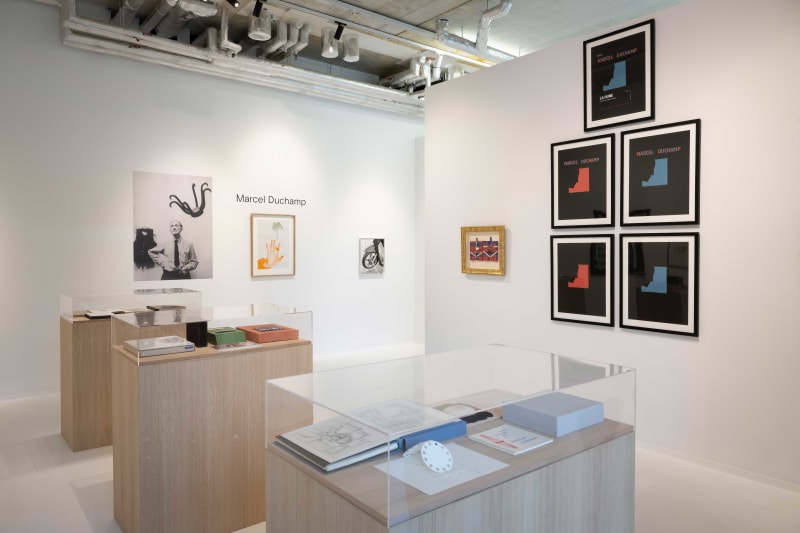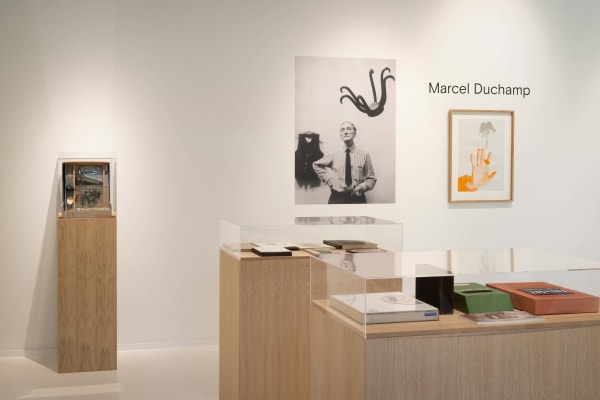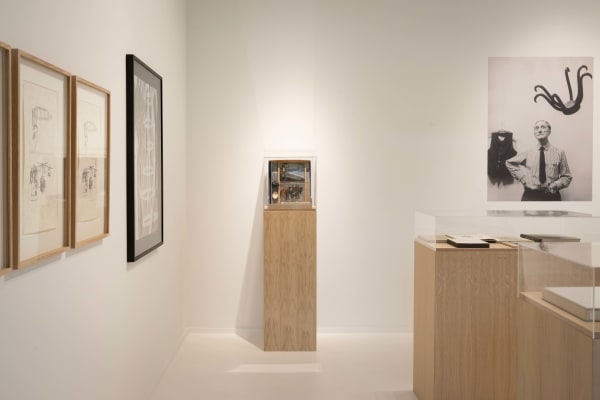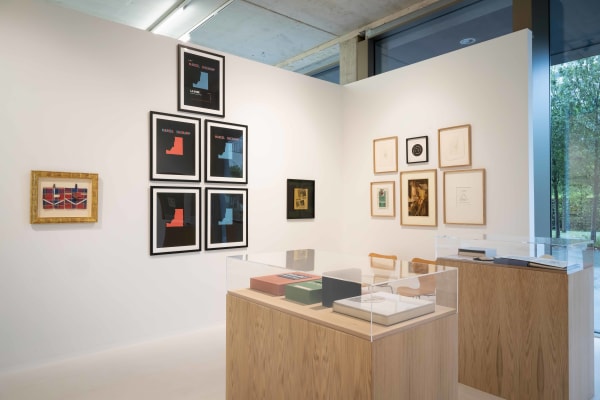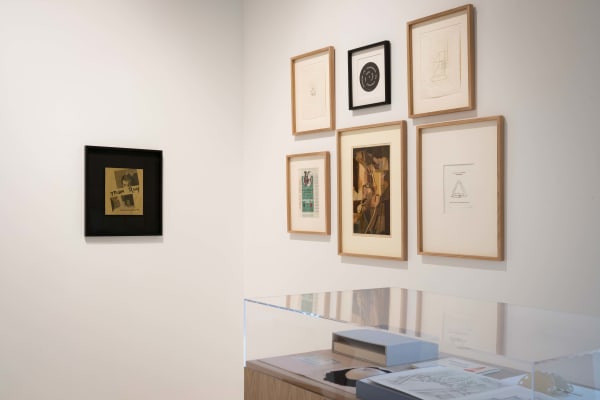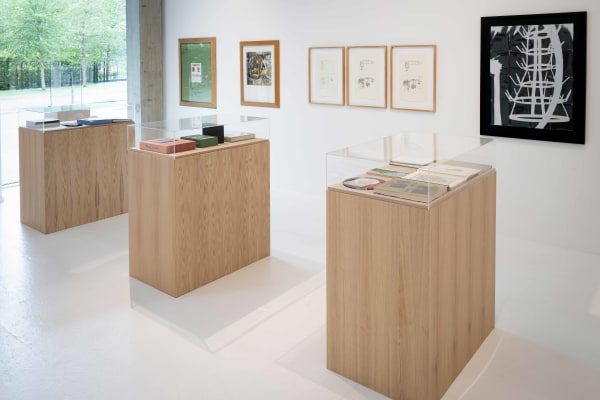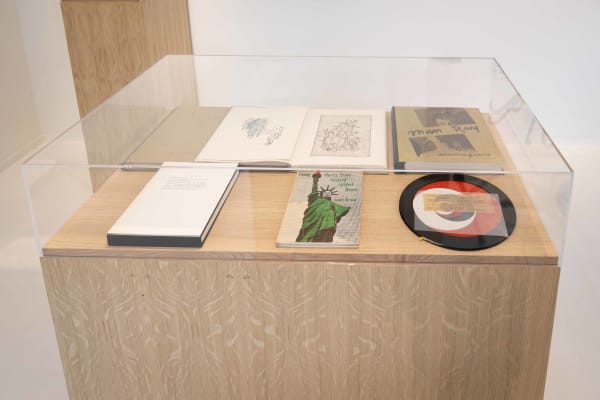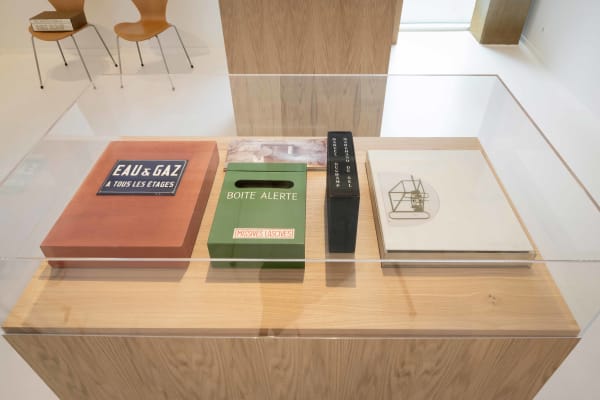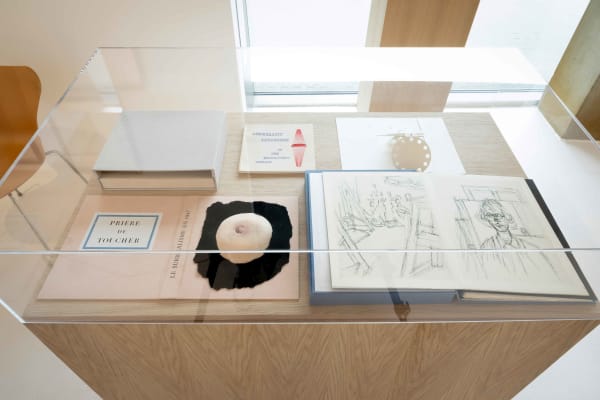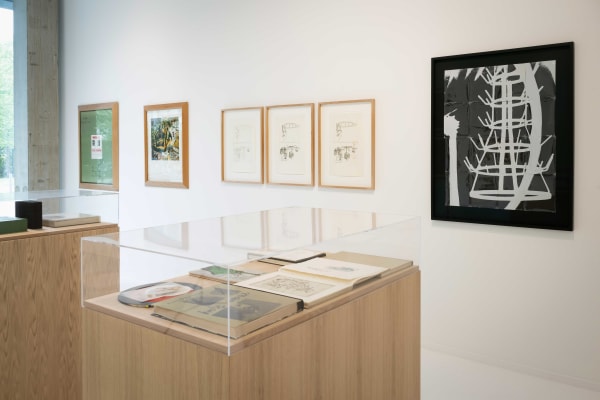Marcel Duchamp: at Project Space, Gallery Sofie Van de Velde
Past exhibition
Overview
This exhibition offers a broad overview of Marcel Duchamp's multiples and graphic works. When in the 1920s he bids farewell to art in order to fully devote himself to the game of chess, he had already assured for the museal future of his most important works by seeing that they were acquired by a few loyal collectors with a philanthropic bent. His rare subsequent interventions in the domain of art have an almost clandestine character; they also are in line with his reputation as an inveterate troublemaker and true keeper of the dada faith. The installation Etant donnés, which he had for years worked on in secret, would upon its unveiling after the artist's death equally serve to evoke the necessary degree of scandal.
Parallel to his strategy of securing his place in art history by way of museum recognition, Duchamp also worked to spread his work to a broader public, but then without ever bowing to latest trends that he saw come and go. He always knew how to strike just the right provocative tone, quite naturally and without fuss. Whether with his Rotoreliefs, whereby he smuggled unartistic objects into deadly serious exhibitions, or with his alternative kind of retrospective - the Boîte-en-valise - that harks back to old-fashioned toy coffers, with his playful and critical interventions Duchamp consistently undermines our received notions about art's role and meaning. He plays a serious game, according to his own rules and with much ambiguity. In the Boîte-en-valise, he drives the irony so far that he even provides the replicas with a patina, just as with works in an old-fashioned museum where conservation and restoration are not prime concerns. In a period where modern typography is on the rise, he sows doubt with his anti-lay-out for covers of reviews and catalogues.
Duchamp's entire body of work is marked by ingenious re-use of elements drawn from popular visual culture. It is then nothing less than logical when once emerging from the shadows into celebrity, he subjects his own oeuvre to the 'appropriation artist' treatment, avant la lettre to be sure. In order to set himself apart from the mass production and distribution of images, he calls upon a most venerable method of circulating art, like here with suites of etchings after the Large Glass and quotations from the great art that had inspired him. For those suspecting him of wanting to turn the clock back, he etches – really 'not done' – a few plays-on-words as illustrations for poems of friends. To the end he remains consistently unorthodox and elusive. He's like a 19th-century dandy – detached, serene, discrete, laconic, with an inclination for solipsism and with paradox as his side-arm. Convinced of the limitless freedom of the individual, averse to all prejudice and loathful of all routine, he emerges as a one-man avant-garde among the successive art movements.
The power of attraction of Duchamp's work and his influence on all artists after him rest on his particular talent to attain maximum results with a minimum of means. It may seem something of a simplification, but the artist who brought humour into great art once indeed began as a creator of caricatures. And it's a verity that the good caricature has to drive the nail home. From these early drawings there runs a sparse and effective line to the readymade erotic pot-holders and so-many other disturbing interventions, here brought together for your visual and intellectual delight.
In collaboration with Henri Steenbeke.
Installation Views
